There are six producers here in Part 3 so I’ll have to be a little more general, especially as one or two twisted my arm to taste quite a few wines. We are also all over the place here, in Czechia, Georgia, Italy, France, Portugal and Spain, but there are some cracking wines with which to finish off my coverage of the wonderful Real Wine 2024.
PETR KORÁB (Moravia, Czechia)
It was nice to catch up with Petr again, my first time since visiting him in 2022. This guy is a force of nature. I’d challenge anyone to find more exciting wines in the hall, and he makes so many that there’s plenty to satisfy anyone’s eclectic tastes.
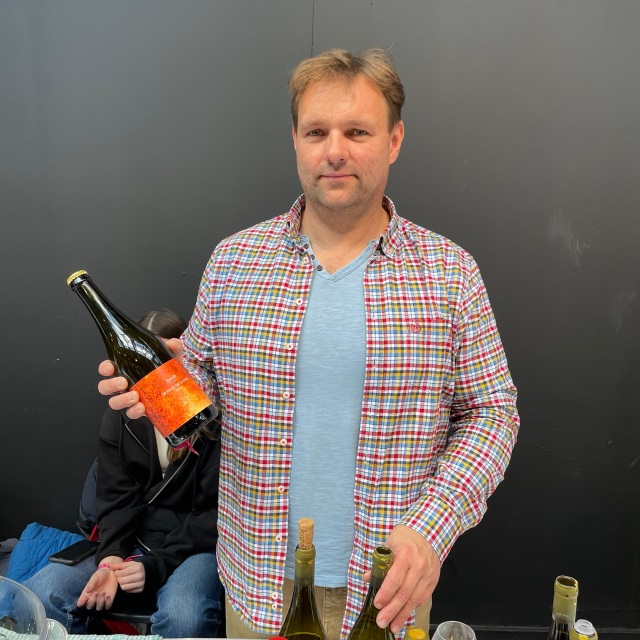
Petr with his Orange on Leaves
I want to focus on just three wines from the fair, although to be honest anything his importer, Basket Press Wines, has at any given time will be worth a shout. First, a wine I’ve never seen before, Mala Hora 2022. This is a single vineyard varietal Chardonnay. It’s pictured in the livery of Petr’s more “serious” wines, which are not as exciting labels as those reserved for his more experimental bottlings, but he tells me it will have a new and different label when released. With a small hint of French oak, this has great salinity and freshness. Very good indeed. I can’t wait for it to arrive.
Dark Horse is a red petnat, comprising Blaufränkisch and Orange Traminer on skins (and aged oxidatively), plus a little Hibernal (a local variety). It’s one of my current favourites from Petr. Dark fruit aromas and a little brambley bitterness, very clean, the bubbles are “gently crazy” (that was my note, whatever it means). It is brilliant, get some before it’s gone.
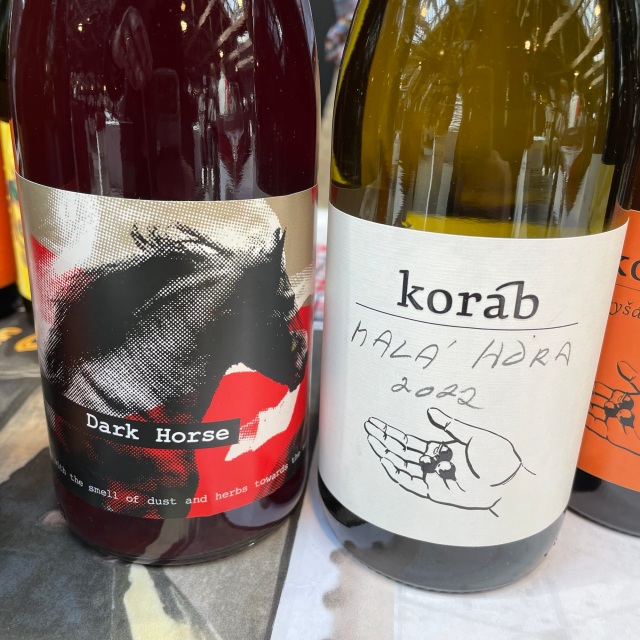
Orange on Leaves 2023 is a Koráb classic. It is a rare cuvée in that it is made regularly (some others are “here today, gone tomorrow, the next day…”. We have Gewurztraminer, Rhine Riesling, Welschriesling and Traminer which are macerated together on dry vine leaves, I think for around four months in acacia. Orange in colour, it really does smell and taste of oranges with a lemon acid spine. Very aromatic, very unusual, but in a good way.
These wines are among the finest natural wines of Central Europe and compare to any of the stars of European natural wine. I sometimes expect to find a quality dip due to the enormous number of wines Petr makes, but I haven’t yet. Basket Press Wines is the importer.
NIKA WINERY (Kakheti, Georgia)
This winery was founded by artist Nika Bakhia in 2006, in Kakheti, Eastern Georgia. This is both natural winemaking, and traditional, using Qvevri for fermentation and ageing. The winery is young, but the vines are old and Nika suggests they were never chemically treated because the smallholder farmers couldn’t afford to.
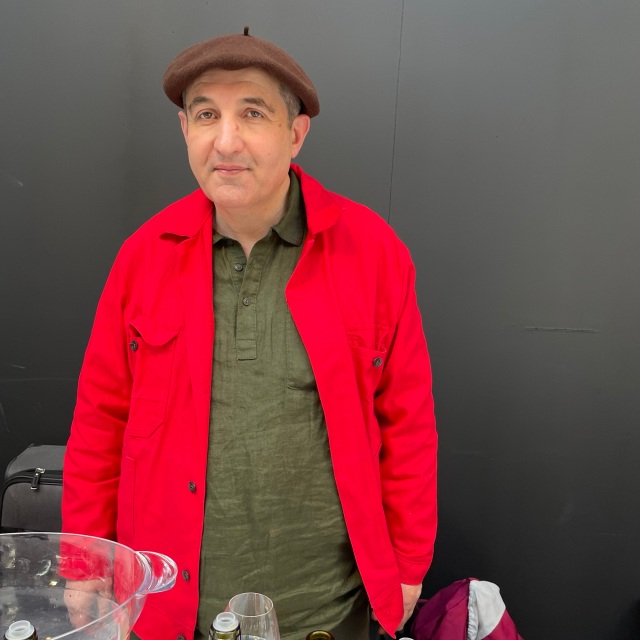
I tried wines I’d not tasted before, in this case wines which I’ve not (yet?) seen listed by importer Basket Press Wines. Piccollo & Niccollo is 100% Rkatsiteli from Kardenakhi, a small appellation in the far southeast of Kakheti. The colour is somewhere between orange and mahogany, and it is pungent, like a plum brandy. Both fruity and a little textured (less than I expected), it is surprisingly lovely. One year on skins.
Toco Poco 2020 is also made from Rkatsiteli. This is named after Nika’s daughter, Antonia Maria. More classic amber in colour, there is just eight months on skins. Silky smooth, quite elegant.
Ma Fille also contains Rkatsiteli, but is blended here with Mtsvane. The source is a very stony single vineyard called Tsagaphi. Nine months on skins in qvevri, it is amber-coloured and has definite tannic structure. I find it better not to really chill these wines if you have a cool cellar. The fridge just accentuates the tannins. I know this kind of wine isn’t for everyone, but it is a classic artisan Georgian orange wine.
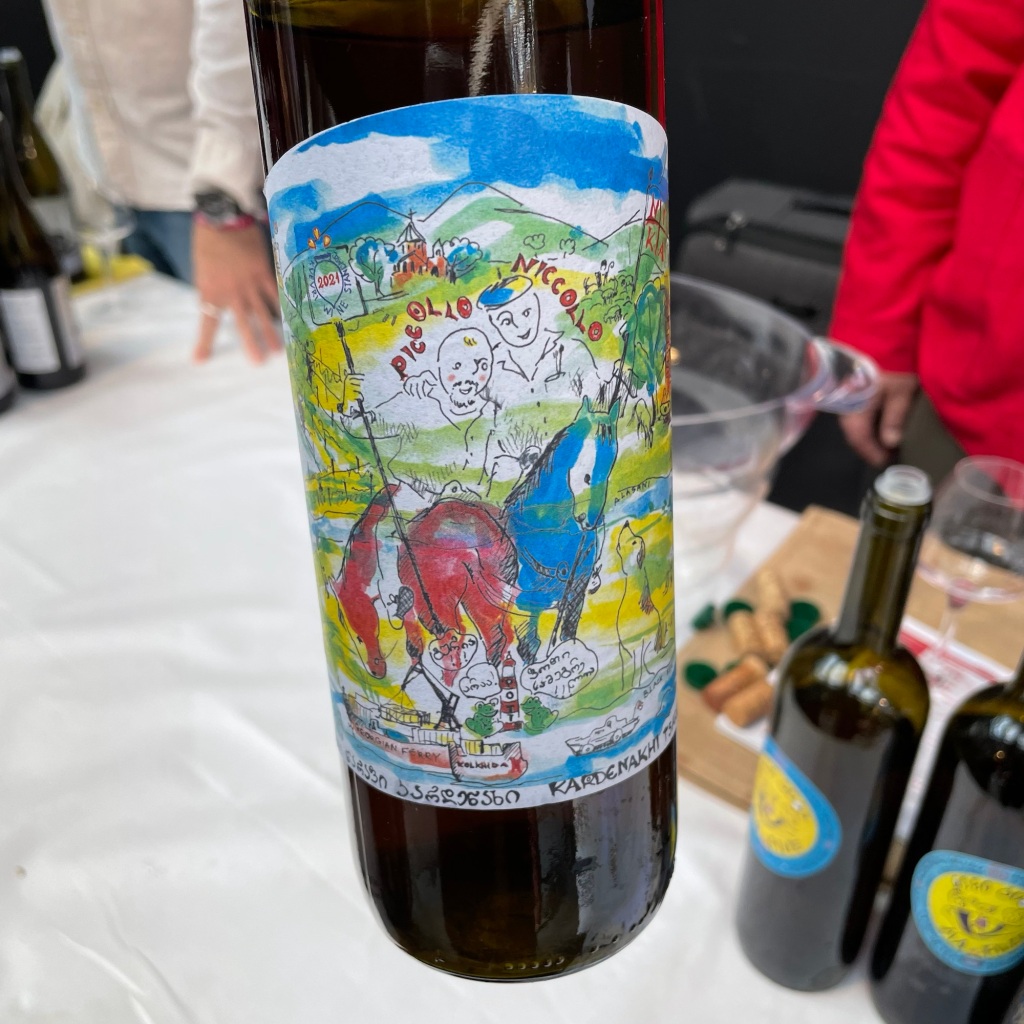
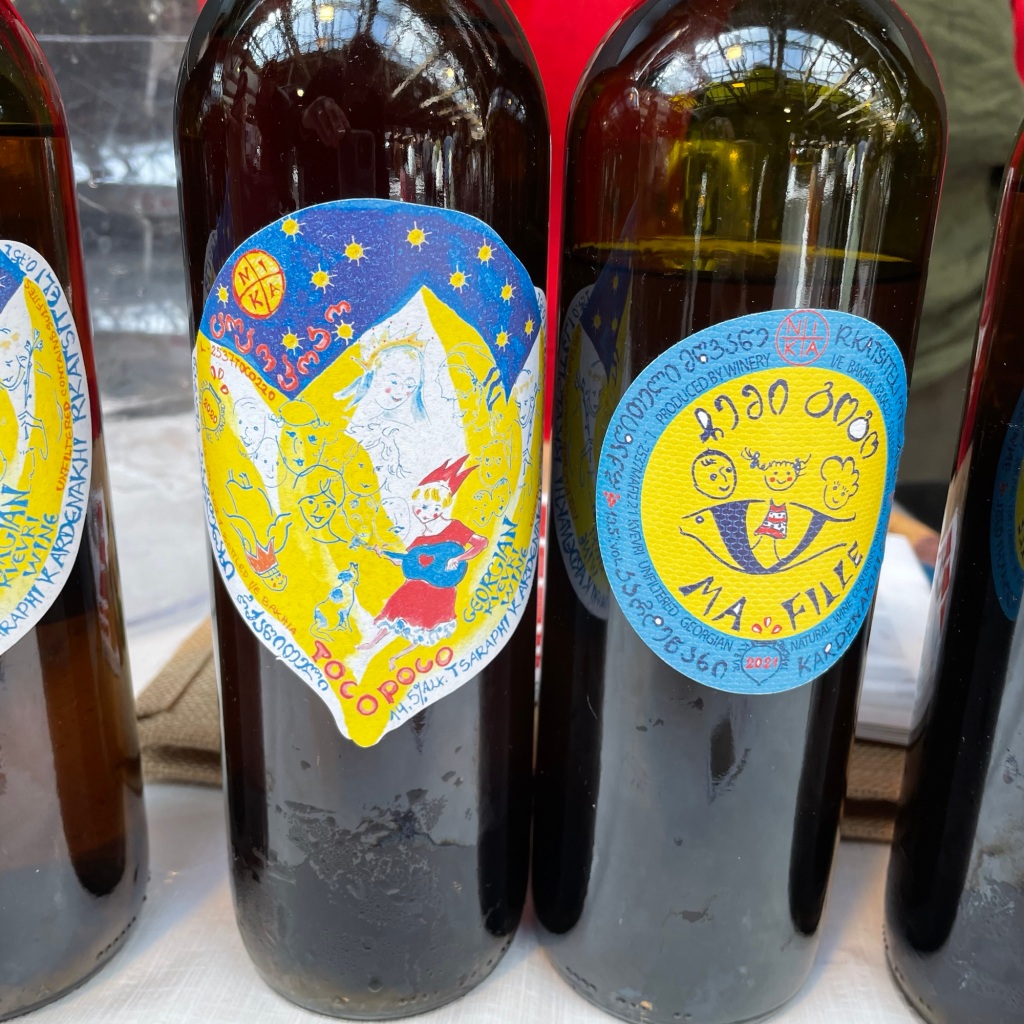
If you found Nika quiet, Zainab (of Basket Press) told me he was feeling quite under the weather. He was certainly more restrained than what we have come to expect from the Georgian contingent. It was also rather a shame his carefully decanted red wine was corked, which he told me before I sniffed it (it sure was).
ANGIOLINO MAULE/LA BIANCARA (Gambellara Hills, Italy)
I have known Emma Bentley since well before she became a member of this family based in the Gembellara Hills, near Soave in The Veneto. Of course you could accuse me of bias therefore, but for the fact that this is a famous estate, and her father-in-law is one of the great names of Italian natural wine. Nevertheless, I do get on very well with Emma so it is always a genuine pleasure to taste these wonderful wines.
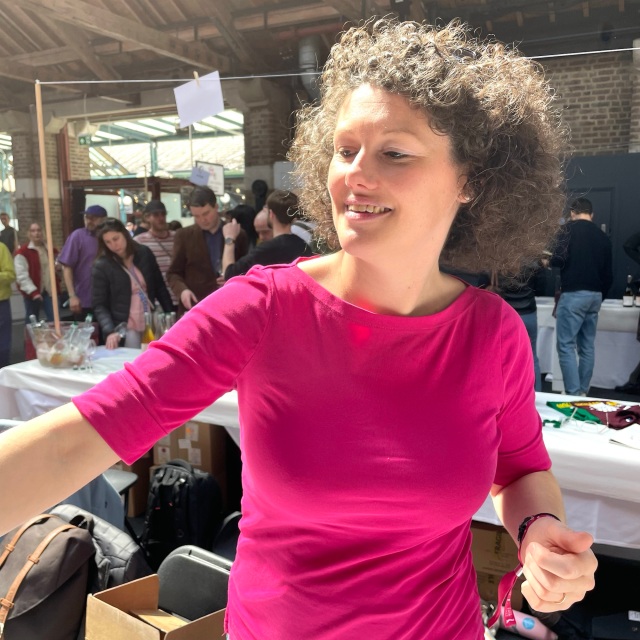
Garg “n” go 2022 is Garganega frizzante. This is a must for summer, an exciting interpretation of this variety which is the mainstay at La Biancara. Bottle-fermented, it is a pure-fruited fizz, but with an elegant smoothness.
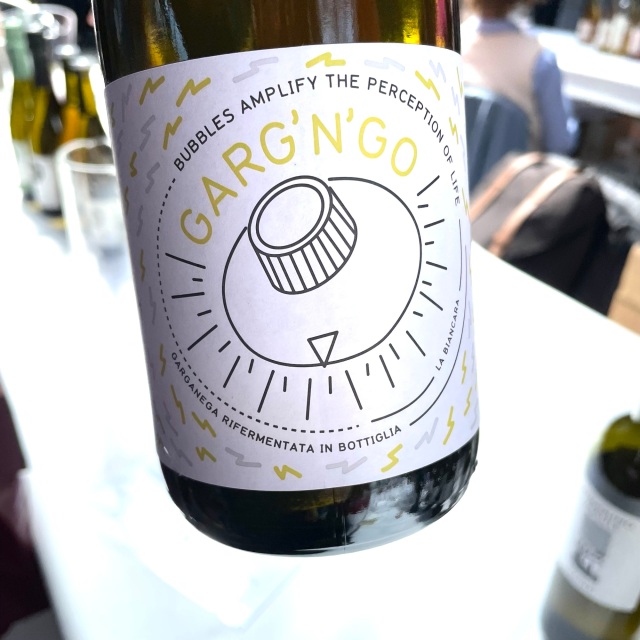
Masieri 2022 is a fruit-forward, simple (in a good way) Garganega, but the wine is given considerable interest by the fruit’s rather savoury edge.
Sassaia 2022 is a selection from this single vineyard located around the family home, at around 150 masl. It has a gorgeous juicy plumpness, but nice refined acids to match. It’s probably capable of ageing, but hard to resist now.
Pico 2021 is a vineyard on top of the hill, at 300 masl. The vines here were harvested in late October. The result is quite different, savoury and herbal, yet also fruity. Ageing is in large oak (neutral) after a little skin contact. There are three different plots within the vineyard and these batches are made separately and blended to taste before bottling. No sulphur is added. You really get that classic Garganega peach and apricot fruit more commonly found in sweet Soave recioto wines. This is the richness of the late harvest fruit, but the wine is dry.

Monte Sorio 2017 is indeed a sweet wine. From volcanic soils, the grapes dry on vertical nets to produce a truly stunning dessert wine, like a Recioto di Soave (which can itself be brilliant), but a natural wine (no added sulphur). It is bottled with 86g/l of residual sugar, but the acidity doesn’t make it seem at all cloying.
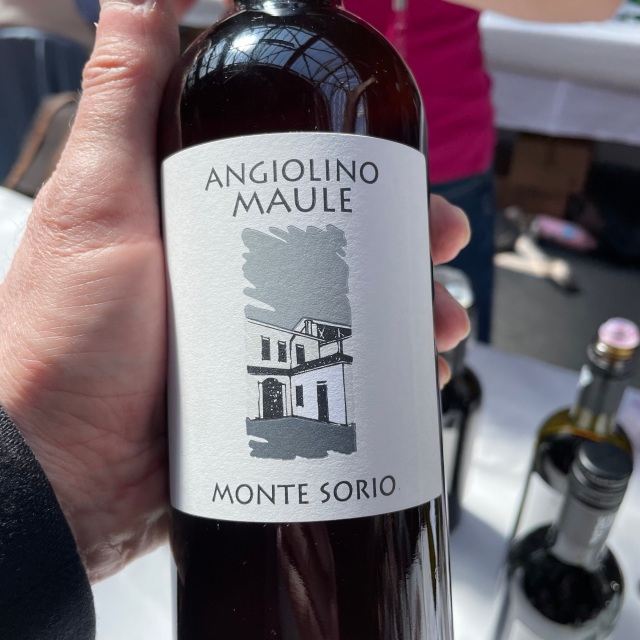
Rosso Massieri 2022. Emma suggests that this wine is soon to be no more. A shame from my point of view, although yes, this is really a white wine estate. My reason for regret is that this is a Merlot, although it is blended with T’ai Rosso (the grape formerly known as Tocai Rosso, but which is actually Grenache, vines originally brought from France and planted about 24 years ago). It’s a simple red but all the better for it, and of course in a different league to the rather indifferent Merlot we are used to from the wider Veneto. That makes it something special. Silky, smooth fruit. I’m hoping Les Caves have some.
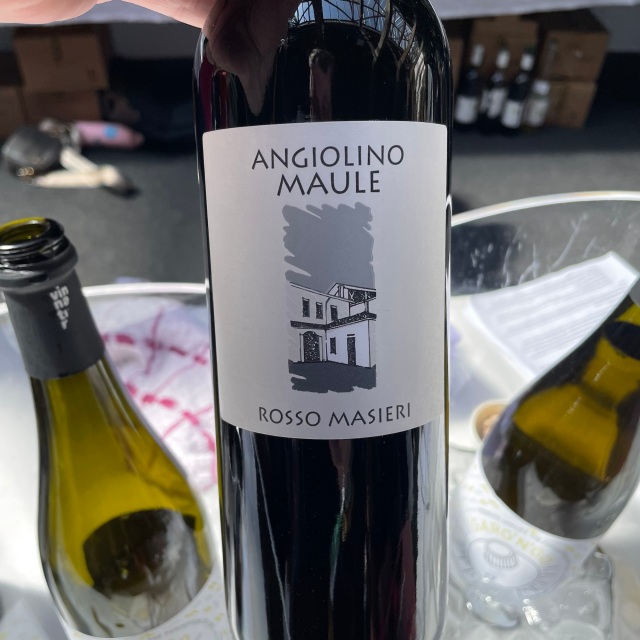
LA CUVERIE AURÉLIEN BEYEKLIAN (Bugey, France)
This is a new Bugey producer to me, but the wines were more than promising, indeed exciting (even given my tendency to get very excited about Bugey). Aurélien is located at Gravelles in The Revermont, the northern sector of Bugey where the wines nod more towards Jura than Savoie. Before starting his currently organic estate (in conversion to biodynamics), he apprenticed with Bret Brothers in Mâcon, Southern Burgundy. Before that he was globetrotting with the International Red Cross.

Three wines were shown. First, the one which sits in my cellar, Patchwork Chardonnay 2022. Fresh and light, don’t expect “Burgundy”, but do expect a degree of sophistication in an extremely appealing wine.
Gloussard Plouplou 2022 is Ploussard (aka Poulsard), all the better for being made from a variety which is almost disappearing from Bugey, something I lament. The fruit sees a two-week whole bunch maceration. A pale, luminous wine, fruity, really interesting personality.
Cerdon Rosé NV is a gently sparkling wine made from 80% Gamay and 20% Ploussard. Cerdon is an almost unique style of wine with low alcohol (9% abv for this one) and off-dry (although the balancing acidity gives it a freshness which take the edge off the sweetness of the residual sugar. It is really refreshing. For this reason, I think we should all be drinking crates (sic) of it through the summer. Especially now, in strawberry season, the wine tasting of strawberries more than anything else. Bugey on down, as they say.
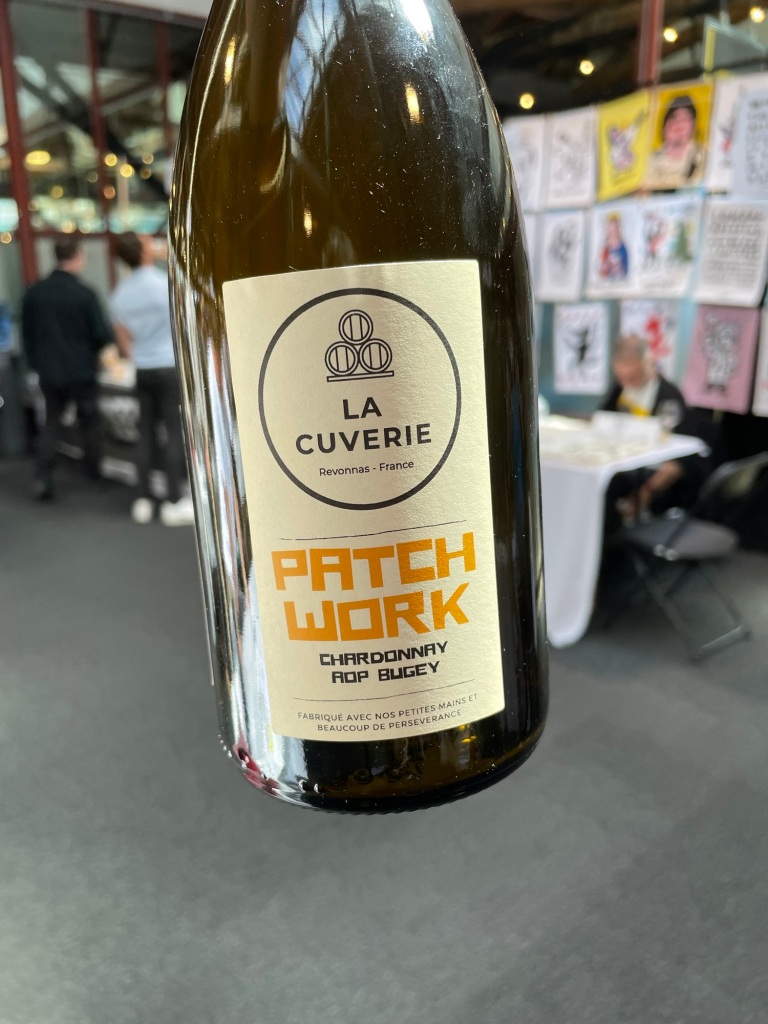
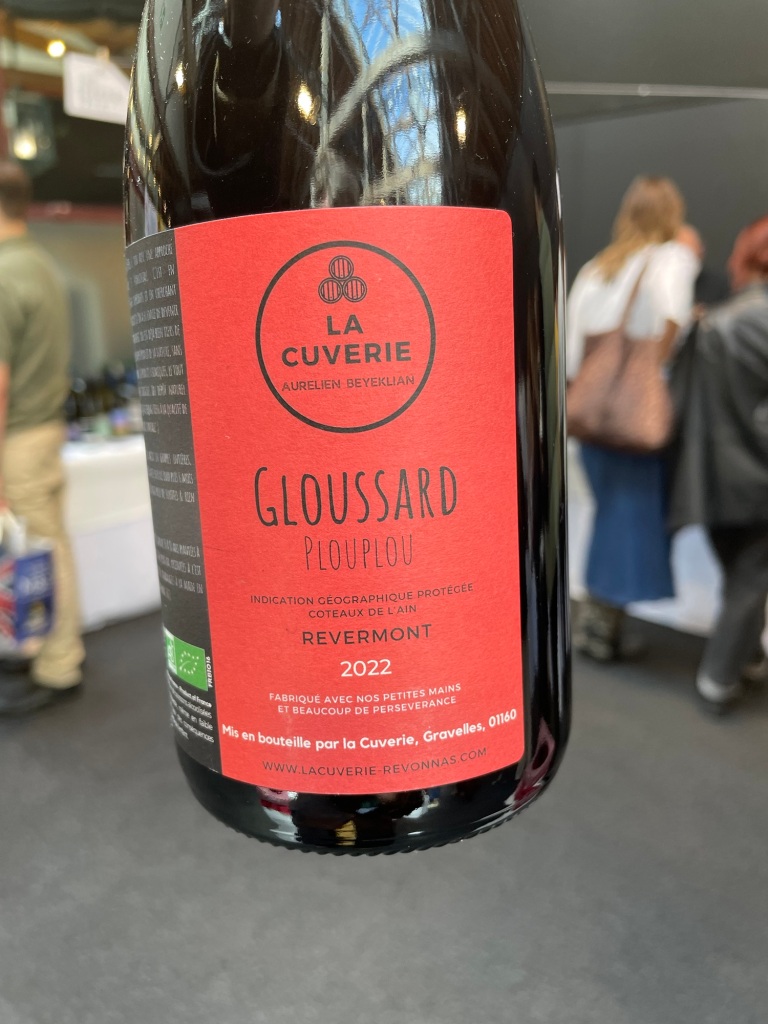

UNCONDEMNED WINES, QUINTA DO MONTALTO (Lisboa, Portugal)
“Uncondemned Wines” is the project of Montalto winemaker Andre Pereira, and makes use of the profuse scattering of old and often abandoned “backyard” vineyards in the area mostly to the north of Portugal’s capital, Lisbon. Once, everyone had a small vineyard from which to make the family’s annual consumption, but Portuguese society is no different to any other in Europe, and times have changed. It’s not unusual for these vines to be between 100 and 150 years of age.
I’d planned to seek this producer out, but as one is walking around the Fair, there’s always a whisper. “Have you tasted…”. This was one of those, a few shouts from friends I bumped into. Portugal really is starting to get some proper recognition and a project like this is the reason why. Old, autochthonous, vines, traditional vinification, and amazing prices for the quality.
Uncondemned Ourem Branco is a yellow-gold Fernao Pires (90% with 5% Arinto and 5% other varieties) with texture, apricot fruit, hints of honey and ginger spice. Very long. Uncondemned Ourem Red is mostly Trincadeira, but contains a raft of grape varieties, both red and white. This is a traditional blend known in the past as “palhete”, effectively a field blend co-fermented to make a palish red. This style pretty much died out but has been reinvigorated, finding favour with younger natural wine drinkers.
These are minimal sulphur natural wines, imported into the UK by Portuguese Story.
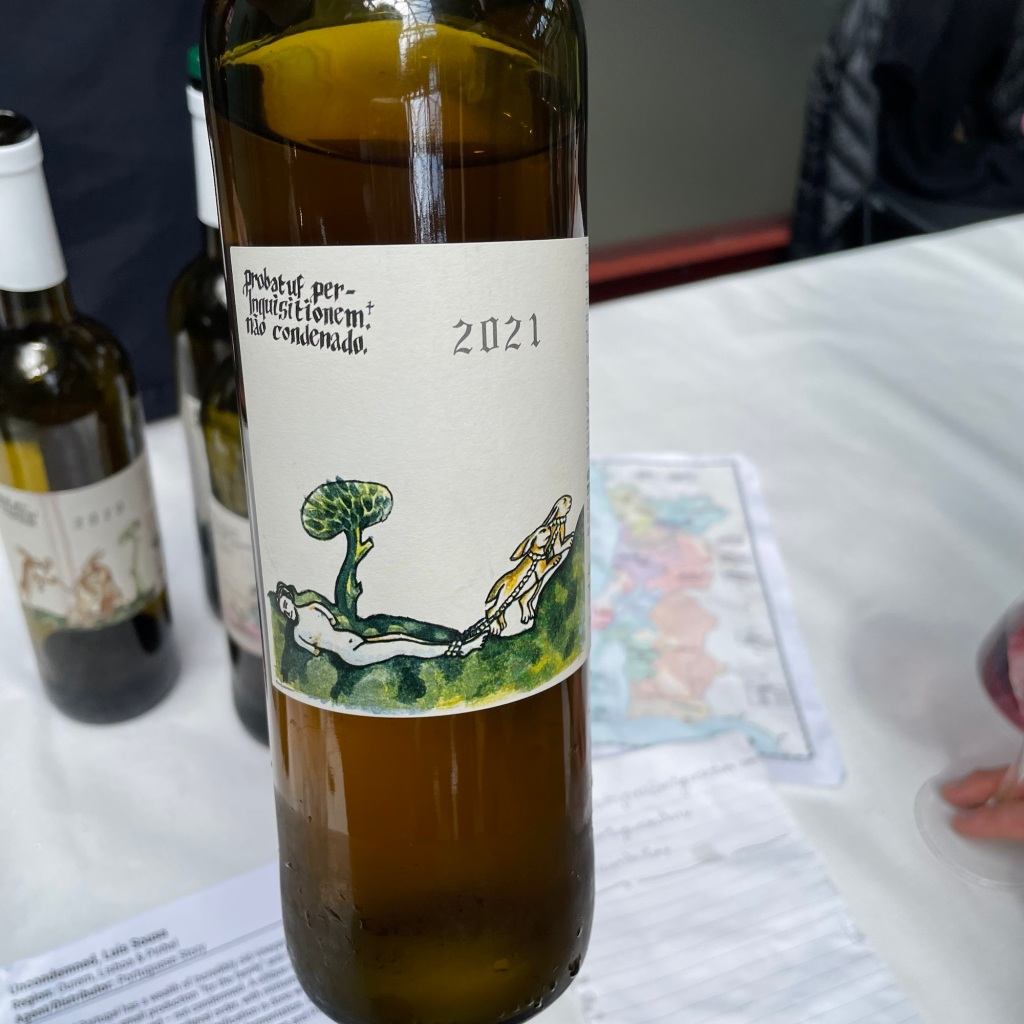
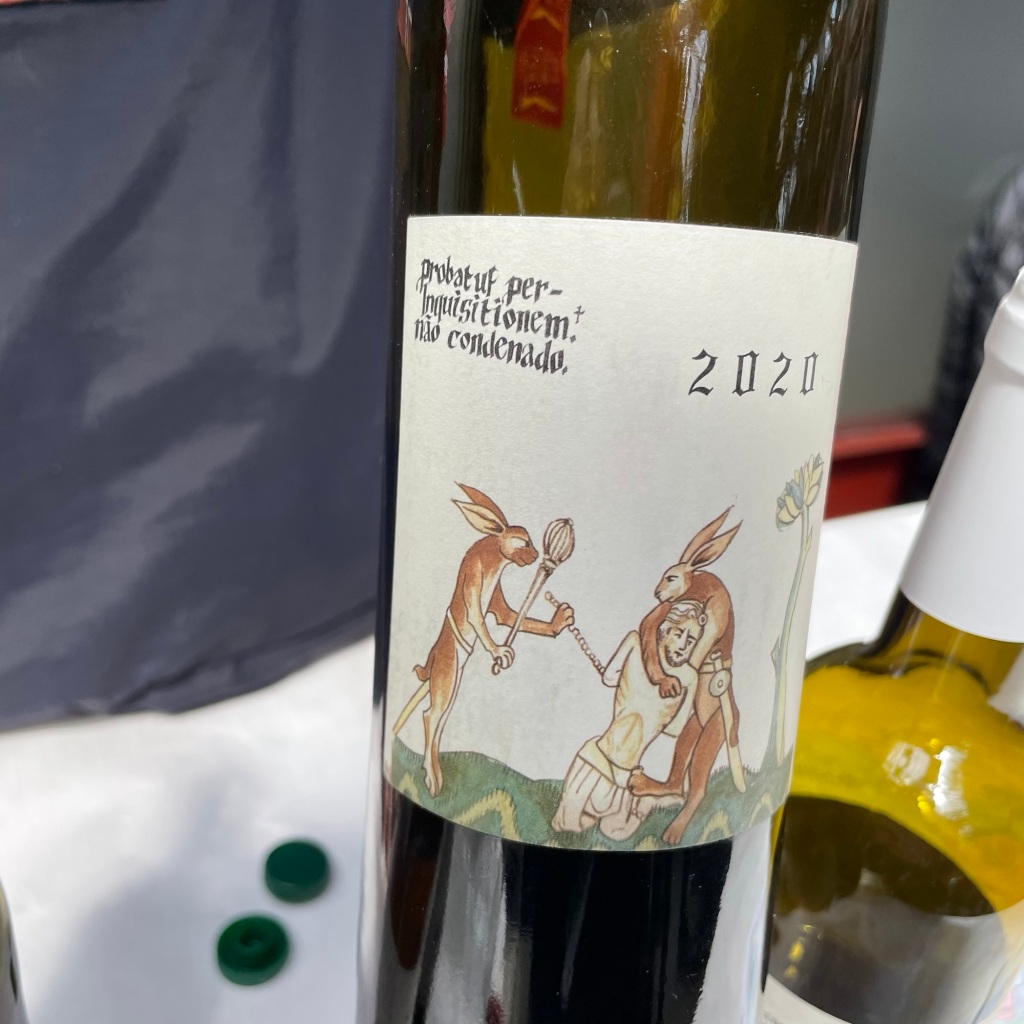
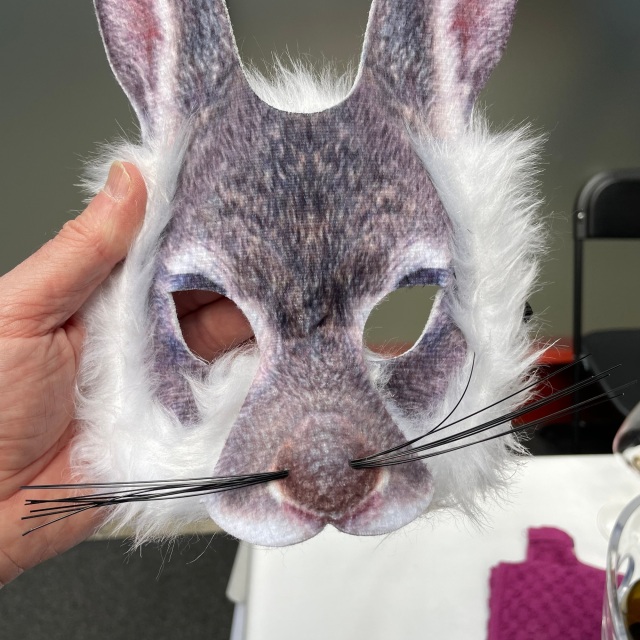
BODEGAS COTA 45 (Jerez, Spain)
There was a time when Jerez was deeply unfashionable yet commercially successful. The profile Equipo Navazos generated changed that. Now it seems that Jerez wines are deeply fashionable yet commercially dying. It’s a shame because in the past decade or so many of the wines have become genuinely world class. Ramiro Ibáñez built his bodega, famously now, in an old boat repair shed on the Guadalquivir River in 2012. His palette is the white albariza soils, “45 metres above sea level”, which help create one of the world’s most distinctive terroirs. The desire is merely to create an expression of unfortified Palomino Fino which expresses the salty intensity of this terroir.
Any of these wines will provide an experience equal to any famous classic wine. It’s just a question of trusting your palate. Caserío de Miraflores Alta is lifted, dry, Palomino which just tastes like the soils under sunlight from which it comes. That dusty, chalky, texture, that lemon citrus acidity, that profound length. I’m pretty sure most readers will know what I mean, but if you don’t, then selecting one word I would choose intensity. But it’s intensity with restraint and elegance.
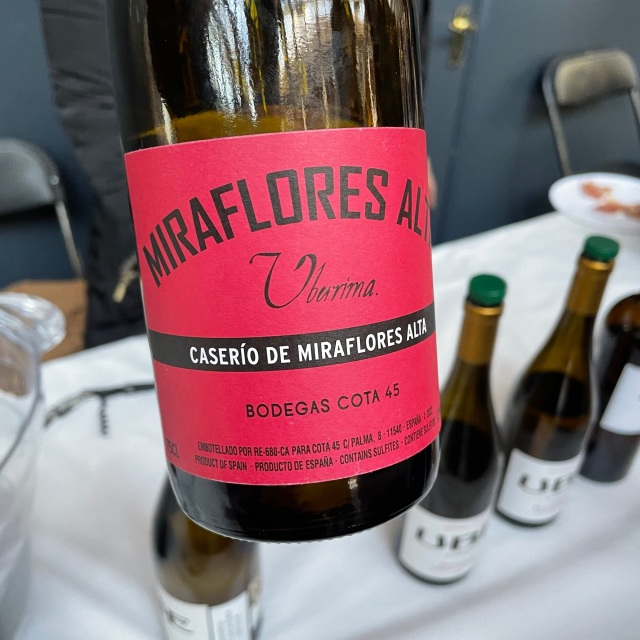
Pandorga 2021 is something of a departure. It’s made from Pedro Ximénez (PX), and was described to me as a new take on the variety. You are starting to see some unfortified PX now, though not nearly as much as Palomino. The natural sweetness is mirrored by a low, 11.5%, abv. The bouquet is full of apricot fruit more than the kind of raisined fruit you get from a more unctuous, fortified, PX. What you do get is hints that are balsamic, rich and savoury as a counterbalance.
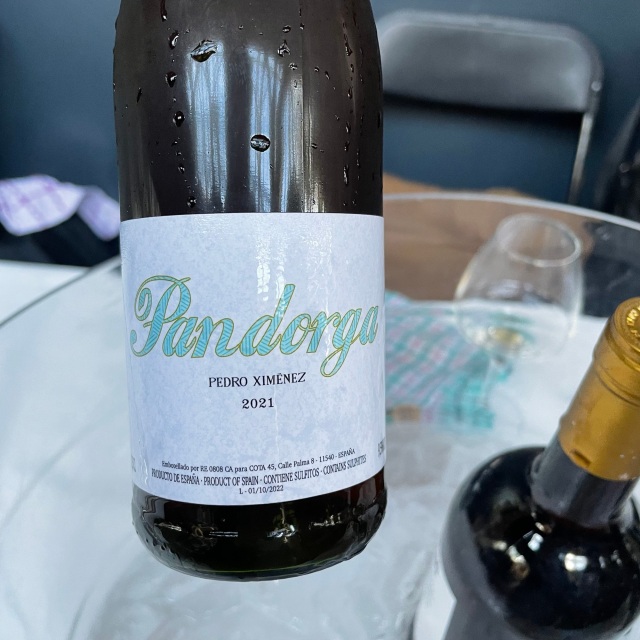
That’s the end of my roundup from Real Wine 2024 (well, except for the after party, more of that, briefly, to come…we went to Noble Rot Soho for the P-aux-M&VJ). In three parts I hope I’ve covered some interesting producers. I can only scratch the surface, and I try to mix the known and the unknown. I wish I would bring you more producers, and I could if I completely ignored all the friends I saw there. I hope that what I’ve written has either brought back some happy memories from this wonderful event, or whetted your appetite to go next time around.
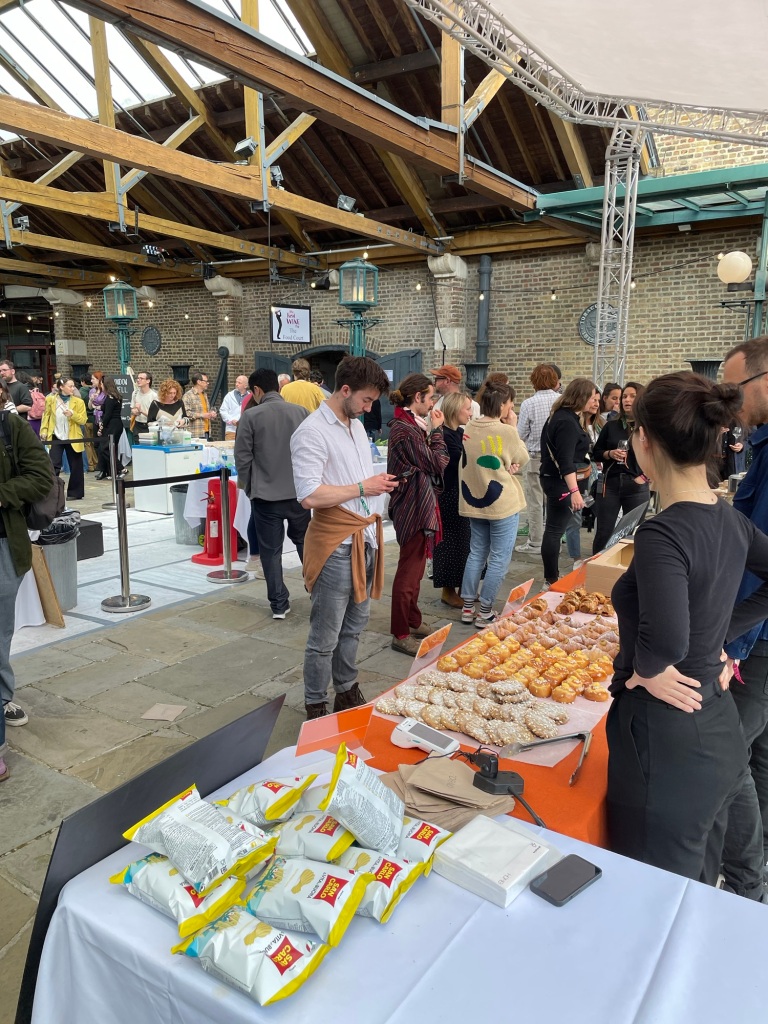
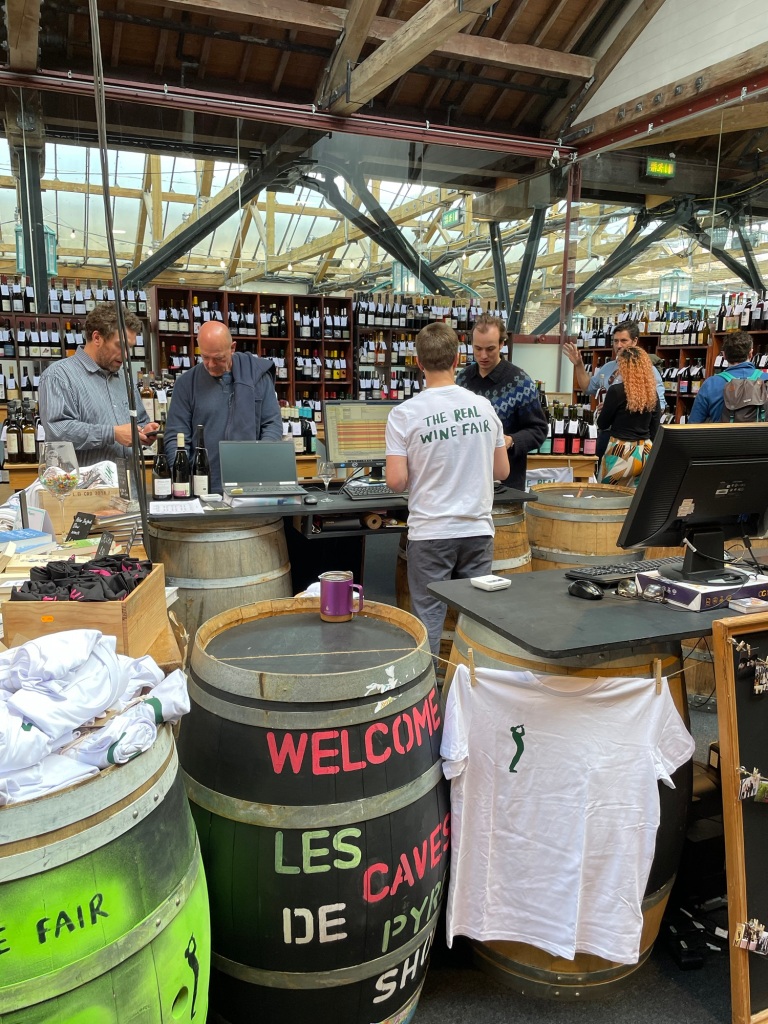
Real Wine always has an excellent food court, but even better is the on-site shop and I never leave Real Wine without a full rucksack. I know I can order, but there’s something about grabbing some of the best bottles you’ve tasted before someone else has snapped them up.

I always enjoy your articles and reviews as each one presents new to me producers. Here, the Beyeklain Poulsard, Nika ‘Ma Fille’, and Koráb’s ‘Dark Horse’ stand out. But most of all, because I am a lover of the saline minerality of sherry wines, the Cota dry Palomino. I don’t think Feral Art here will have the last wine but maybe the others !
LikeLiked by 1 person
Thanks Lynn. I love your articles too. But whilst I can like them, the comments are alway turned off.
LikeLiked by 1 person
Hum, they shouldn’t be. I will check that and try to remedy!
LikeLiked by 1 person
I see other comments but for me it always says “comments now closed”
LikeLike